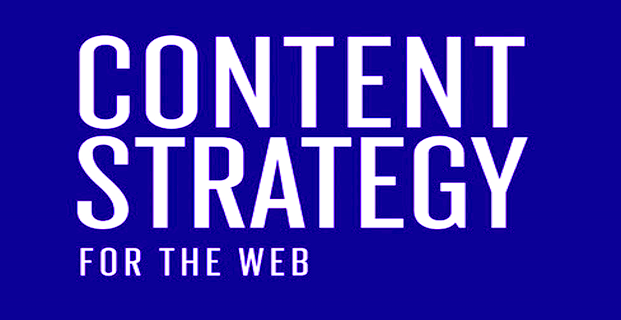Content Strategy & Why Do You Need It
What Is a Content Strategy for Your Website?
Having a content strategy simply means planning for the creation, delivery, and maintenance of fresh online content. It’s a process that defines the what, why, how, and when for developing the content you use to market your business. Your content strategy must be a repeatable system that allows you to most effectively take advantage of your website and your presence within the Internet.

Simply put, a content strategy is an plan for communicating with your online audience. While your content strategy usually begins with your website, it certainly shouldn’t end there. To be at all effective, you must embrace all digital methods of communication.
Why Do You Need a Content Strategy?
A content strategy allows you to plan ahead to develop and produce fresh content over time for your online audience. This content, delivered consistently, provides specific and measurable benefits:
- Search Engine Optimization: What many SEO experts may not tell you is that Google rates new, relevant website content very high in its super-secret algorithm for ranking. Every time you post new content, search engines find it and index it, which gradually increases your ranking.
- Customer Engagement: Fresh content is but one of the many ways online visitors find your website. Continuing to post articles of interest engages your audience, keeping them on your website longer. Studies document that the longer visitors stay on your website, the more likely they will contact you, sign up for more information, or buy your product or service. And the goal of any business website is to turn eyeballs into dollar bills.
- Website Visibility: A content strategy allows you to employ every means at your disposal for a single purpose. For example, if you post a blog about a specific topic, you can promote it through your social media accounts. Ultimately, every marketing campaign needs to be coordinated to point your audience to one place and/or encourage them to do a single thing (like go to your website). Thinking out your content goals in advance allows you to spend less time on each campaign while increasing the effectiveness of each.
- Business Authority: With each new piece of content you publish (assuming it is professional, useful, and on topic), your company gains credibility and respect. When you write to inform, and not just to sell, you become an authority in your field, which increases the effectiveness of each of the other three points.
What Does a Content Strategy Cover?
Your content strategy should cover everything digital. What do we mean by “everything digital?” Here is a far-from-thorough list of outlets and methods in which you can digitally communicate with your audience (which includes your customers, prospects, vendors, and even fans):
- Web page content
- Blog posts on your website
- Press releases
- Email newsletters
- Social media outlets, including:
- Google+
- Note: In this blog post, we focus on content strategy for your website; however, to learn more about the opportunities and challenges presented by social media, download our helpful Social Media DIY document on navigating social media.
Now, focusing on one outlet at a time, determine the following for each:
- Who is your specific audience for the outlet (e.g., existing customers or leads)?
- What are your goals within the outlet (e.g., finding or serving customers)?
- What kind of content should you create or update for each outlet (e.g., white papers or 144-character blurbs)?
- How often should you attend or post on that outlet (e.g., monthly or hourly)?
- Who will be responsible for creating the content (e.g., your marketing department or a hired gun)?
- What is the approval process for posting the content (e.g., editorial review or just initials at the bottom)?
- What action do you want readers to take at the end of each post (e.g., visit your website or buy your product/service)?
- How can you measure success (e.g., increased sales or website visits)?
While some of the different outlets seem very similar, make sure you carefully examine each to find the subtle differences. For instance, many novices link their Facebook, Twitter, and LinkedIn pages so they only have to post once to multiple outlets. Unfortunately, this is a fairly easy thing to accomplish, even for a novice.
 What you may not understand, however, is that these three different outlets cater to three different audiences, and these audiences have three different reasons for participating in each community. Think of how you personally (not professionally) use Facebook, Twitter, and LinkedIn. See the difference? If you don’t provide distinct audiences with the right information in the right way at the right time, you may miss your target market… or worse, alienate the very people you were trying to connect with.
What you may not understand, however, is that these three different outlets cater to three different audiences, and these audiences have three different reasons for participating in each community. Think of how you personally (not professionally) use Facebook, Twitter, and LinkedIn. See the difference? If you don’t provide distinct audiences with the right information in the right way at the right time, you may miss your target market… or worse, alienate the very people you were trying to connect with.
Summing Up
Much like a brand document, once clearly defined, your content strategy becomes a resource that you can and should refer back to regularly. Update it when necessary to ensure that it stays aligned to your goals. If you spend the time, energy, and yes, money to correctly work through this process, you should expect to see a fairly quick increase in website ranking, traffic, and engagement.
You build your community of customers and fans one missive at a time. Make sure they are all on target.
Ray Access is a content marketing firm that delivers targeted words to empower your business. Contact us about your specific project to receive a quote or discuss your needs. We write website copy, blog posts, e-newsletters and more. Everything we do is thoroughly researched, professionally edited and guaranteed original.
